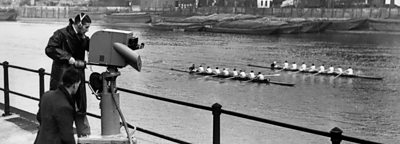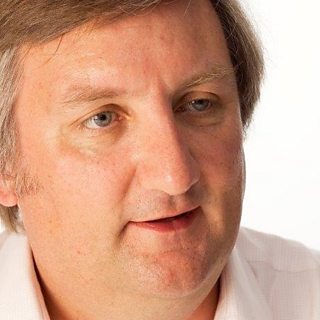Image: Televising the head of the river race from Harrods Depository near Hammersmith Bridge, 1938. Video: Clips from every era of ΒιΆΉΤΌΕΔ TV coverage of the Boat Race.
Dramatic crashes, famous commentaries, contractual shocks, and technical innovations. Who would think a rowing event between the same two universities could produce such drama year on year on the ΒιΆΉΤΌΕΔ, since 1927? The University Boat Race between Oxford and Cambridge is one of the country's best-known annual sporting events, and the ΒιΆΉΤΌΕΔβs association with it has produced many tales to add to its lustre.
Richard Haynes, Professor of Media Sport in the Division of Communications, Media and Culture at Stirling University notes:
Like many major sports events the ΒιΆΉΤΌΕΔ helped to popularise through running commentaries, the Boat Race already had an established history and popularity by the time of its first broadcast...There's reference to a 'press launch' from the 1860's and the 'dead heat' of 1877 was apparently decided on by the press corps. The race had a broader public interest by the 1920s, which by then was also supplemented by newsreel coverage.
First Radio coverage
The first radio coverage was on 2 April 1927. The launch Magician cast off that April afternoon with four engineers, a pilot, 1,000 lbs of generator and batteries. Also on board were an unlikely commentary pairing β Olympian and three-time Oxford rower Oliver "Gully" Nickalls alongside literary editor Sir John Squire. Nickalls said afterwards:
We stood on each other's foot when it was our turn to interrupt, and simply poured excited words from start to finish, totally oblivious to being heard or not.

1931 saw the first commentary for someone indelibly linked with the event, John Snagge. He did 36 more until retiring in 1980, but is probably best remembered for his 1949 effort. The commentary launch fell behind the race before Hammersmith Bridge, not catching up for two miles. Struggling to see the close finish, Snagge excitedly declared:
I don't know who's ahead, it's either Oxford or Cambridge.
-
Commentary from the 1949 Boat Race John Snaggeβs famous gaffe "Oxford are ahead, no Cambridge are ahead. I don't know who's ahead, but it's either Oxford or Cambridge!"
Enter Television
By 1938 the new ΒιΆΉΤΌΕΔ Television Service boldly decided to televise it. Most of the race was covered in sound only, using Snaggeβs commentary and illustrated in the Alexandra Palace studio with a chart of the course and the two boats being moved along it using magnets.
Three live cameras covered the finish. It was not until 1949 that the whole race could be televised, using eight shore-based cameras and another in a launch following the flotilla.
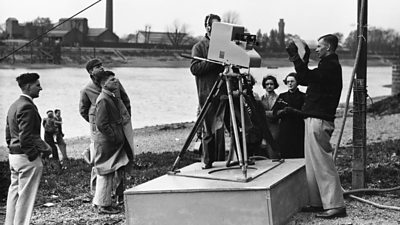
Fast-developing TV technology encouraged innovation over the next decades, but no amount of fancy kit could prevent chaos in 1984. The Cambridge boat hit a barge during the warm-up, and damaged their bow. Producer/director Johnnie Watherston remembers:
It was impossible to get any information as to whether they could change boats and restart, or race the next day...Grandstand was screaming for information, and poor Harry Carpenter in the commentary box above one of the boathouses just had to keep waffling on. The only picture I had of it was from the helicopter, which in those days had the cameraman sitting with the door open holding his camera looking down to where the crew were.
It was eventually rowed the next day, the first ever Sunday race.
On radio, John Snagge handed commentary to Brian Johnston, then tragedy struck; 31st March 1990 was the blackest day in ΒιΆΉΤΌΕΔ Boat Race history. Making his debut, Peter Jones on board the launch Arethusa suffered a massive heart attack. Caroline Elliot was producing:
Just after Hammersmith Bridge he simply stopped commentating, still holding the microphone, but clearly paralysed. Our expert Dan Topolski picked up commentary, but once it dawned on us what was happening we quickly tried to find a place to land. We had to wait until Chiswick Boathouse, and to complicate matters Arethusa developed a fault so it took 10 minutes. We shouted for doctors, but the ambulance took an age to arrive as it was the same day as the poll tax riots in central London.
Jones never regained consciousness - the ΒιΆΉΤΌΕΔβs celebrated voice of radio sport was silenced.
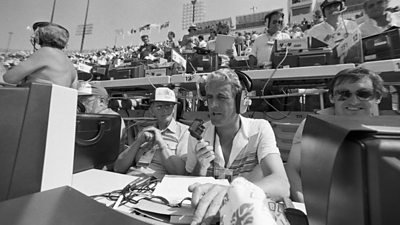
Expansion and Evolution
Rowing's increasing profile, fuelled by Olympic success, meant that by 2000 coverage had expanded from a slot on Grandstand to a two-hour programme. Watherston's successors, including recent Directors of ΒιΆΉΤΌΕΔ Sport, such as Barbara Slater, continued to expand and innovate for growing audiences. Barry Davies became "Voice of the Boat Race" from 1993.
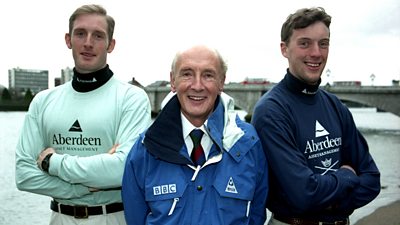
Few however could have foreseen one other change. In 2004 ITV dramatically outbid the ΒιΆΉΤΌΕΔ for broadcasting rights. A surprise? Maybe to many but not the organisers, insists the then chairman of the event's negotiating group, Chris Rodrigues:
We felt it was important to have a competitive bid process. ITV's marketing vision won the day. They promised to build both audience and Londonersβ interest with ancillary support programming, and there would be more sponsor opportunities. The world had moved on since John Snagge.
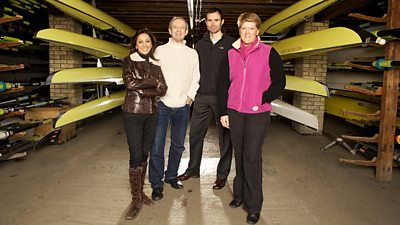
Back on ΒιΆΉΤΌΕΔ One since 2010 it's now renamed the Boat Races, as the women's race is covered the same afternoon. Producers have at their disposal 30 cameras, including 6 on the Oxford and Cambridge boats alone.
Communications along the course are carried by a state-of-the-art specially-built IP mesh system. The race is broadcast on the ΒιΆΉΤΌΕΔ News channel and by many other international rights holders, while radio commentary takes its place dependent on clashes with other sport and is on 5 Live Sports Extra.
Multi-camera, online, digital, on demand, worldwide. Nickalls, Squire and Snagge would surely approve.
Charles Runcie worked on sport for the ΒιΆΉΤΌΕΔ from 1982-2016.
